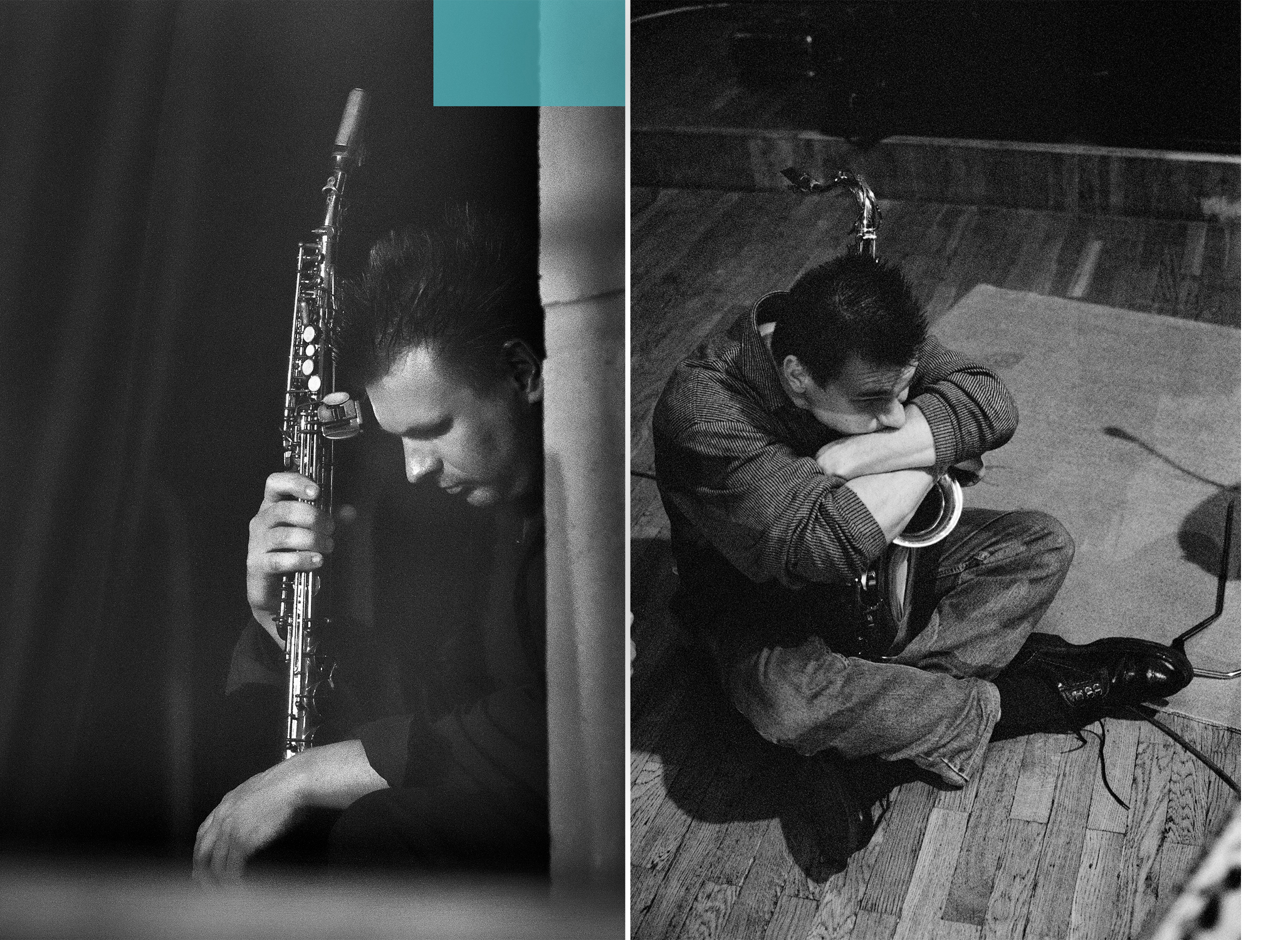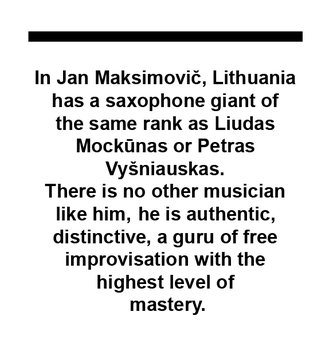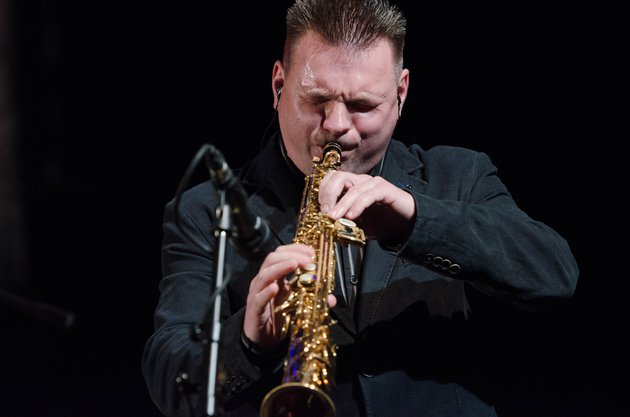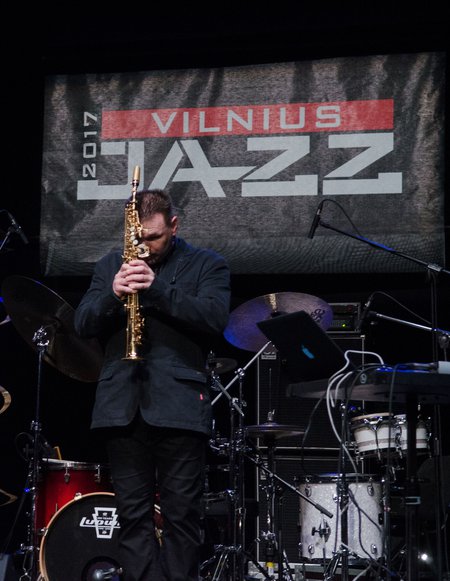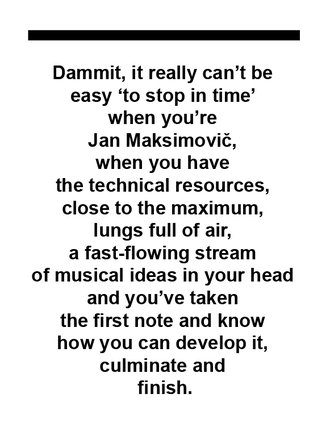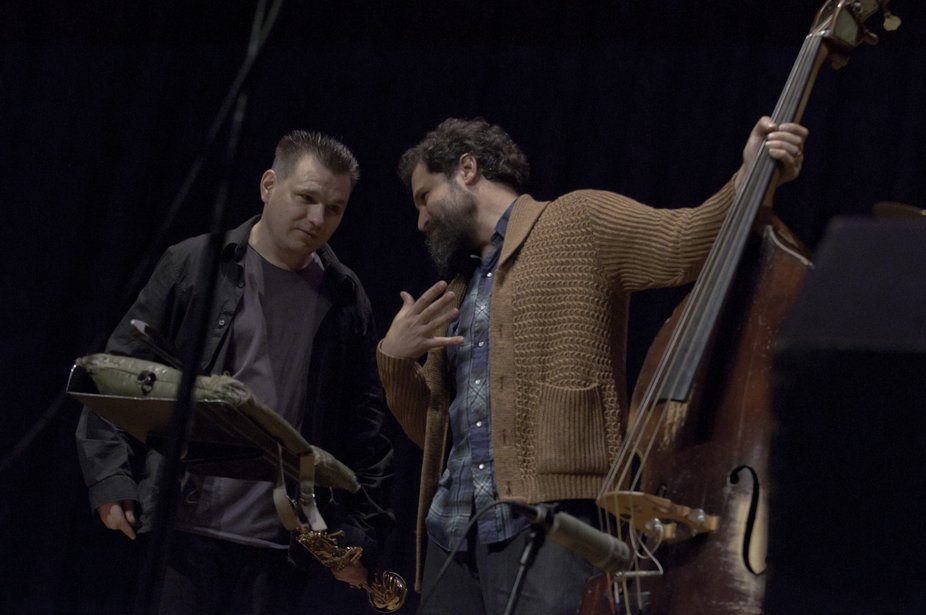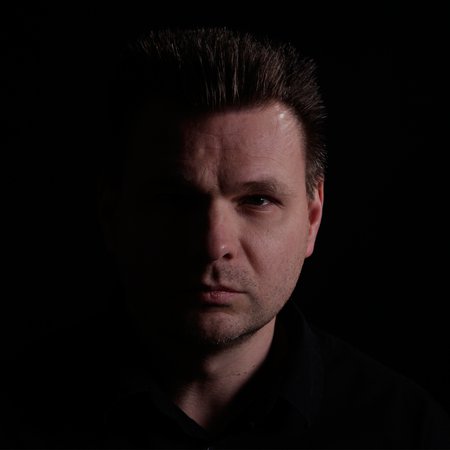Laima SLEPKOVAITĖ-BUTĖNIENĖ | Jan Maksimovič: A Philosopher of Jazz Lacking in Hubris
If you want to get to know Vilnius jazz – you have to hear the saxophonist Jan Maksimovič, but that may be a little complicated. He is an active performer who regularly takes part in all the international jazz festivals in Lithuania. You can hear him in clubs, at academic venues – in his homeland and beyond, but he has never in fact released an album. You can find some of his recordings on SoundCloud and YouTube but only if you know where to look. Jan Maksimovič’s marketing skills and habits are in direct opposition to his musical talents. He simply has no time or motivation for self-promotion, letters, clips, selfies behind the scenes or Facebook posts. There are more important things: music, family, and life.
So, it’s probably my job to proclaim loudly that, in Jan Maksimovič, Lithuania has a saxophone giant of the same rank as Liudas Mockūnas or Petras Vyšniauskas. Perhaps it’s my job to convince the reader/listener that there is no other musician like him, that he is authentic, distinctive, a guru of free improvisation with the highest level of mastery. It’s also my duty to note that Jan Maksimovič’s performances of contemporary academic compositions are amazingly compelling and virtuosic. Generally speaking, his technical abilities allow him to do a great deal but he does not undertake to do something for the sake of quality or effect – he only takes on what he completely believes in.
One of these projects born out of a firm belief is the currently active trio Infiltrators made up of Jan Maksimovič, Dmitry Golovanov and Arkady Gotesman. The trio from the moment of its conception has been constantly presented not as a jazz unit but as one going beyond such a description, and Jan explains it like this:“Each of us sets down certain limits for ourselves. I, for example, would like to put those limits so far back that they won’t even be visible. And if you try to put a name to something – then that’s already a certain kind of limit, a certain kind of restriction. So, it happens naturally that what we do is an attempt to go beyond those limits. And you don’t want to artificially define yourself by some style. You simply live, enter into a dialogue with the world around you and try to convey that through music. Whether that’s jazz or something else – that’s hard to say, that’s not what I basically think about. I always think about what I want to say, what I feel inside me, what my relationship is with myself and with what is around me.”
“But that’s jazz!” I respond.
“But what is jazz?” says Jan, smiling. “Again, that’s hard to define. Some people say that jazz is swing – a particular style or set of styles which fall within this concept. In my opinion, jazz was a certain period. After that something new began again.”
Mr Maksimovič is neither the first nor the last jazz performer to try to reject giving a name to the musical universe he represents. This is a positive rejection, the pioneer of which was John Coltrane, who avoided labelling his music and who said that music is “an expression of the human heart, or of the human being itself”. For Coltrane, this was a necessity since he was implementing a radical revolution and taking improvisational music in a direction which no jazzman’s imagination had yet taken, so a word marking a tradition should not get in his way. And when a saxophonist tells you he doesn’t recognize any rigid structures, cunningly embedded in the concept of ‘jazz’, he confesses it in his love for John Coltrane and reveals where he got so much rage, so much passion, what motivated him to perfectly master saxophone technique and what his artistic aim is – to realize in music his own expression of ‘the human being itself’, but in his own language.
“Surely, all that musical world, the whole history of jazz has an influence,” says Jan, “since I have a relationship with that. All musicians hear that music, it’s like books which work on you and have an impact. But, while experiencing all those influences, a musician has to preserve his own personal understanding as to how and what he does, to try not to quote what you’ve just read, unless it’s to summarize and then go further. And in going further – to discover what is really his and what he wants to say. That, it seems to me, should be the goal – to be oneself.”Jan Maksimovič has undoubtedly already reached this goal and is successfully maintaining this strategy of ‘being oneself’. He has a recognizable sound, an extensive, rich improvisational vocabulary, a subtle feeling for ensemble work… I’ve had the opportunity to hear him play with the Swiss trio Vein, with the Latvian saxophone virtuoso Deniss Pashkevich, and a host of Lithuanian musicians – in very different ensembles of diverse styles: from extreme free form music to naïve fusion.
“How’s that possible?” I ask.
“The most important thing is to hear and feel the person or persons you’ve come to. Then, when necessary, to contribute something of your own to what is already there. And to try to do that without overwhelming others. To my mind, that’s a very complicated thing since you often want to go further and always overcome something but you have to try to preserve a common space.”“But isn’t that the task of the leader of the ensemble, of the project?”
“The best music making is when there is no leader. A dialogue is created between people, a deep relationship in which everyone is equal and everyone is involved in the same process which is called making music. When such a dialogue and that sort of collaboration take place – miraculous moments are born. And that is a thing made by everyone taking part.”
“Paul Bley didn’t play and didn’t even come onto the stage while the ensemble was playing well. He’d sit down at his instrument only when he felt he could improve on something.” While Jan was speaking, I remembered the creative stance Bley had voiced more than once. “An optimal stance, isn’t it?”
“That’s wisdom. Wisdom to stop in time and not get in the way of others expressing themselves. It’s not easy but you should try.”
Dammit, it really can’t be easy ‘to stop in time’ when you’re Jan Maksimovič, that is to say, when you have the technical resources, close to the maximum, lungs full of air, a fast-flowing stream of musical ideas in your head and you’ve taken the first note and know how you can develop it, culminate and finish. To hear on the same stage your colleagues, to adjust your vision with the visions being conceived in the minds of others at the same time – that’s an undertaking equal to the efforts of a superhero to defeat a super villain, without destroying a city, i.e. one that requires the rejection of admiring oneself and of special effects.
Saxophone special effects, by the way, are nowadays mostly widely heard amongst the exponents of free jazz. In Lithuania Liudas Mockūnas is a real master, with a wide palette in his arsenal: from growling to various shades of murmurs and the percussive tapping of the keys. That is a good, legitimate, artistically justifiable way to extend the usual saxophone palette. Jan Maksimovič also uses them but on a considerably more limited scale, he more often chooses a pure saxophone sound and its natural shades, of which, it appears, there are an awful lot. In spite of a total avoidance of abusing the instrument’s richness, he nevertheless manages to get a ‘how does he do that?!?’ reaction because, with an increase in emotional tension, the music demands that the musician lay out everything he has. And he has a great deal.However, he demonstrates all of that – usually, directly on stage. Jan Maksimovič should get an award for being the musician who takes the least care in disseminating his work:
“Well… You know I don’t understand anything at all about the management side of things. What I do – that’s simply my life, my interaction with the world. How could I try to sell that? I do what I do and don’t think about how to present it. I am the way I am.”
“And what about recordings. I haven’t come across your album, don’t you avail yourself of the self-publishing models commonly used in Lithuania? But you must document your own music?” I asked, surprised.
“There are some recordings – made in a studio and from concerts, only I can’t seem to put them into any format, a CD…”
“Why? Aren’t you able to set out the concept you’d like according to your artistic criteria or it is more a case of technical obstacles?”
“I simply don’t have the patience because you have to engage with that, those are more organisational things which force you to think not about music but about how to present it, package it, release it. That’s probably a deficiency in me because I don’t have the patience; I simply want to make music. Dima [Dmitry Golovanov] has said that it’s hard dealing with me because I’m… anti-commercial.”… and that’s not a bad thing because sometimes it seems that there needs to be a counterweight to that limitless business side in the world of art. From out, sadly, infrequent conversations I’ve got the impression that Jan is a person with a very clear aesthetic value system, knowing unhesitatingly what’s beautiful and what’s not. That’s also a rare thing nowadays when many of us have developed an appetite and a tolerance for everything. To say you don’t like Kenny G is bad tone since music like that has a right to exist and, besides that, it gets many beginners in jazz into jazz. I’m asking him to share his thoughts about those choices, what to put into your ear and what better not to.
“Beautiful or not beautiful – that’s also not a criterion. I was once at an art show, I think, in Druskininkai. I was looking at the pictures and thinking of how to understand them, how to perceive them. And this feeling came over me that if they touch my soul – wonderful, and if they don’t move me – there’s nothing there for me. It’s a very subjective thing. There’s no good or bad, only what moves you or doesn’t move you. For me it’s only if it’s real or not real – that’s all. Those are my criteria.”
“And what at present in art, not necessarily in music, excites you, what do you want to share and draw attention to?”“To draw attention to those close to you. The beginning is there. We sometimes don’t hear things there. We go deeper into things somewhere else and don’t hear the people next to us…”
This segue knocks me off track and becomes the finale of our conversation – the high note of life’s truth which again tells you a lot about Jan. In asking him about art, I was trying to provoke him into displaying his erudition, his understanding of cultural discourse, but he chose to say something universal, simple, sensitive, and truthful.
He does the same thing with his saxophone – he chooses to talk about only what’s important. That doesn’t mean avoiding having some fun on stage – humour and a smile are also important but for every emotion, every gesture Jan Maksimovič looks for and finds the most appropriate situation and in that there is never any attempt to pander to the audience, never any effort to be liked. After all, that’s how music should be born: naturally and without artifice, out of talent, a wish and the ability to speak, as well as having something to say.
Mr Maksimovič lacks only one thing – the ambition to construct an international career. A perfect example of a ‘slacker’, giving himself up to his creative work and ignoring the duty of a musician to at least make some attempt at becoming popular. In spite of wilfully ignoring marketing, Jan Maksimovič has been a part of Lithuania’s jazz elite from his student days. He is an inspiring, widely influential personality, one of the first names listed in answer to the question as to what’s best on the Lithuanian jazz scene.
Translated from the Lithuanian by Romas Kinka
